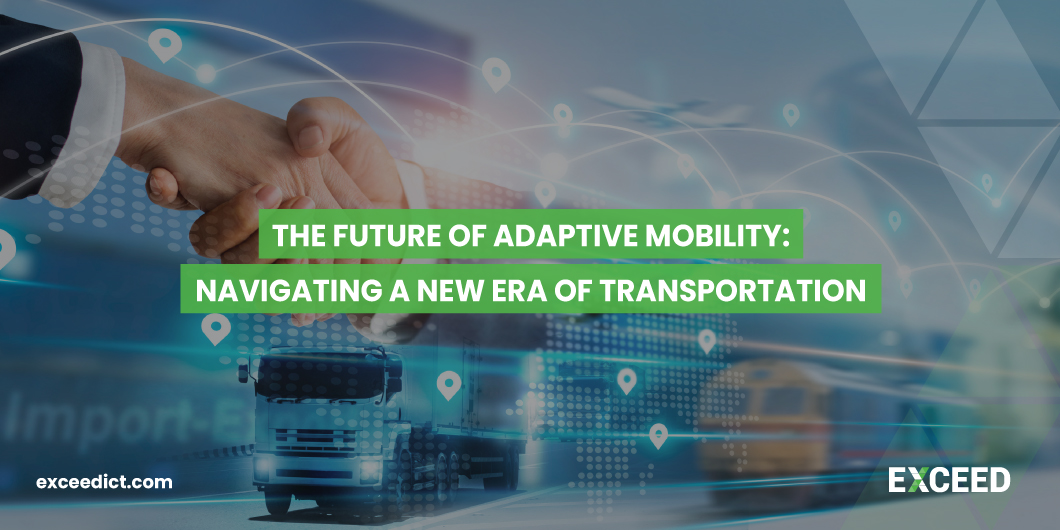
The Future of Adaptive Mobility

Adaptive mobility is revolutionizing the way we think about transportation. Gone are the days of traditional modes of transportation like cars and buses.
Today, it offers new and innovative solutions to get us from point A to point B. With advancements in technology and a growing focus on sustainability, it is shaping the future of transportation.
In this article, we will delve into the world of adaptive mobility and explore its many facets. We’ll examine the latest trends, technologies, and innovations that are driving this rapidly evolving field.
Whether you’re a seasoned professional or a curious traveler, this guide will provide you with a comprehensive understanding of adaptive mobility and its many benefits.
What is Adaptive Mobility?
It refers to a new and innovative approach to transportation that emphasizes accessibility, sustainability, and flexibility. This approach seeks to make transportation more accessible for people with disabilities and to reduce the negative impact of transportation on the environment.
The Benefits of Adaptive Mobility
There are many benefits to embracing adaptive mobility. From reducing congestion and improving accessibility, to promoting sustainability and reducing our carbon footprint, it offers a wide range of advantages that are hard to ignore.
One of the key benefits of it is increased accessibility. By providing new and innovative transportation options, it makes easier for people to live their lives with disabilities to get around. Whether it’s through the use of specialized vehicles or new technologies, it is improving accessibility for everyone.
Another key benefit of adaptive mobility is sustainability. By reducing the reliance on traditional modes of transportation like cars and buses, it is helping to reduce our carbon footprint and minimize the negative impact of transportation on the environment. Whether it’s through the use of electric vehicles or innovative technologies like ride-sharing, it is leading the way towards a more sustainable future.
The Latest Trends and Innovations in Adaptive Mobility
Adaptive mobility is a rapidly evolving field and there are many exciting trends and innovations that are shaping its future. From electric vehicles and self-driving cars, to new and innovative modes of transportation like hoverboards and e-scooters, adaptive mobility is leading the way towards a more accessible and sustainable future.
One of the latest trends in adaptive mobility is the rise of electric vehicles. Electric vehicles offer a sustainable and cost-effective alternative to traditional gasoline-powered vehicles. With advancements in battery technology and the growing availability of charging infrastructure, electric vehicles are becoming an increasingly popular option for people looking for a more sustainable mode of transportation.
Another trend in adaptive mobility is the development of self-driving cars. Self-driving cars have the potential to revolutionize the way we travel by offering a safer, more efficient, and more accessible mode of transportation. With the growing popularity of ride-sharing services like Uber and Lyft, self-driving cars are becoming an increasingly common sight on our roads.
Frequently Asked Questions About Adaptive Mobility
Q: What is adaptive mobility?
Answer: Adaptive mobility refers to a new and innovative approach to transportation that emphasizes accessibility, sustainability, and flexibility.
Q: What are the benefits of adaptive mobility?
Answer: The benefits of adaptive mobility include increased accessibility, sustainability, and reduced congestion.
Q: What are the latest trends and innovations in adaptive mobility?
Answer: The latest trends and innovations in it include electric vehicles and self-driving cars, as well as new and innovative modes
of transportation like hoverboards and e-scooters.
Q: Is adaptive mobility only for people with disabilities?
Answer: No, adaptive mobility is not just for people with disabilities. It seeks to make transportation more accessible for everyone, including people with disabilities, as well as promoting sustainability and reducing congestion.
Q: Will adaptive mobility replace traditional modes of transportation like cars and buses?
Answer: It’s possible that traditional modes of transportation may eventually be replaced by adaptive mobility solutions. However, it’s also likely that traditional modes of transportation will continue to coexist with it’s solutions in the future.
Conclusion:
Adaptive mobility is changing the way we think about transportation. With its focus on accessibility, sustainability, and flexibility, it offers a wide range of benefits that are hard to ignore. From electric vehicles and self-driving cars, to new and innovative modes of transportation like hoverboards and e-scooters, it is leading the way towards a more accessible and sustainable future. Whether you’re a seasoned professional or a curious traveler, it’s an exciting time to be exploring the world of adaptive mobility.
You may also like to know more about:
- Adaptive Mobility Solutions.
- Telstra Adaptive Mobility.
- The impact of Adaptive Mobility on employee experience.
Check out our other Services and Find Us (Exceed ICT) on Google map.



